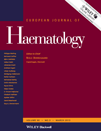Evidence of differential selection for the −α3.7 and −α4.2 single-α-globin gene deletions within the same population
Abstract
Since the 1950s, a strong correlation between high carrier rates for β-thalassemia mutations and selective survival advantage in tropical and subtropical ‘malarial belt’ regions has been established. Due to the relatively more complex genetics of α-thalassemia, a similar relationship was demonstrated for α-globin gene mutations only from the 1980s, with both single- and double-α-globin gene deletions prevalent in the malarial belt. Mechanistically, the single-α-globin gene deletions arise from non-allelic recombination between the homologous α1 (HBA1) and α2 (HBA2) globin genes. Compared to the −α3.7 and αααanti3.7 rightward crossover alleles, much less is known about the −α4.2 and αααanti4.2 leftward crossover alleles. We performed a survey of 1,285 unselected cord blood samples from the 3 major ethnic groups in Singapore. Overall, the frequency of the −α3.7 deletion was significantly higher than its reciprocal αααanti3.7 triplication, consistent with positive selection for the −α3.7 single-gene deletion. In marked contrast, there was no significant difference in frequency between the −α4.2 and reciprocal αααanti4.2 alleles, suggesting the absence of positive selection for the −α4.2 single-gene deletion. The similar αααanti3.7 and αααanti4.2 allele frequencies also suggested that the crossover rates at X and Z homology boxes are similar. Taken together, these observations suggest a differential positive selection for the −α3.7 and −α4.2 alleles within the same population. Further population and biological studies may be required to explain these current observations.




